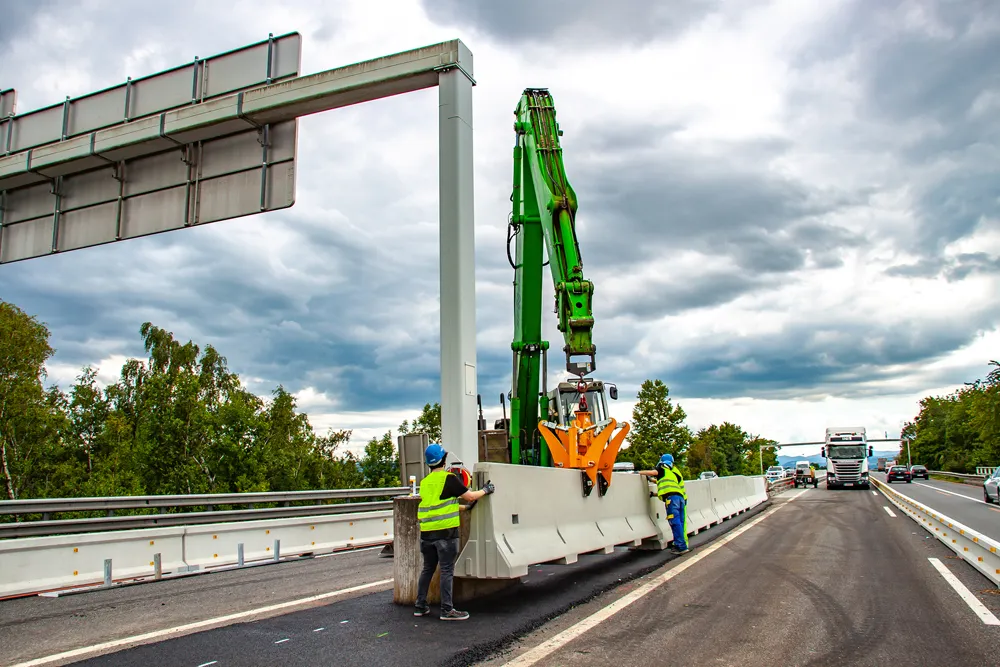
The highly versatile REBLOC 120 series can be installed for long-lasting H4b protection on the central reservation and along the verge. Additionally, the product is tested for installation on bridges.
The REBLOC 120AS_7.5 barrier with performance level H4b/W2 has already been installed on several motorways in large scale for the protection of critical bridge structures, such as bridge piers in the median.
The exceptionally low working width W2 means that the required space does not exceed 0.8m and reflects the very low dynamic deflection during impact. Valuable space can be maintained and sufficient width of traffic lanes is ensured. A key feature is the system height of 1.2m which offers effective glare protection.
REBLOC Concrete Barriers ensure a secure and fast installation at any time of the year, day or night, and, above all in any weather. The integrated, innovative coupling does not contain any loose parts. This not only enhances safety and speed of installation but also prevents unauthorised removal and vandalism. REBLOC safety barriers are fully tested to EN1317.








